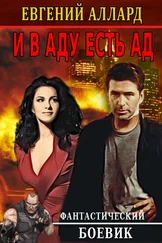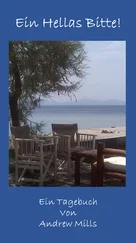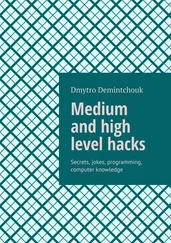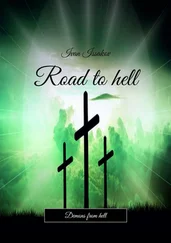A feeling of surprise and shock shot through me as I swept over the still-smoldering OH-6. I just couldn’t believe that Jones’s Loach had burned on impact. That was the surprise. The shock came when I saw what the fire had done to the ship. The interior of the bird was pretty much burned out. The tail boom had separated and was lying on the ground. The blades were off and also on the ground. The cabin section around the engine and fuel cell was completely burned away, and the front of the bubble was broken and largely melted down onto the ground.
Then my eye picked up the worst of all: Potter’s arm and helmeted head hanging out of what used to be the back cabin of the airplane. “Shit,” I whispered, and my face involuntarily grimaced. “My God… no!”
Not attracting any ground fire on the first fast pass, I told Willis to stay on my tail for another run over the crash, this time lower and slower.
We came around again and headed back into the clearing at about forty knots and maybe ten feet off the ground. Just as we neared Jones’s smoldering ship, some of the ordnance on board began exploding. There were sharp cracks from some of the M-60 rounds. Then a big burst from one of the Willie Pete grenades went up right in front of my bubble.
Damn, I scolded myself, what a dumb shit I am not to remember that there was live ammo on board! With no alternative, I flew right through the billowing white phosphorous smoke while yelling over the radio to Willis. “Veer off, One Seven! Take it out wide! We’ve got ordnance going off in the wreck!”
Rod’s reaction was instantaneous. He peeled his OH-6 off my tail and whipped around the wreck. He obviously didn’t want his next shootdown to be the result of getting hit by our own bullets.
Then I hit UHF again for a report to my gun, Dean Sinor. “Three One, this is One Six. One Eight’s bird is still burning, and there’s some ordnance going off out of the back cabin. We confirm Charlie Echo KIA. The Loach is pretty much burned up. We’ve got no sign of enemy contact. The area is cold at this time.”
Sinor’s “Roger, One Six” was practically smothered by the unexpected voice of the troop CO, Major Moore. He was apparently nearby in his C and C ship.
“One Six,” he bellowed, “this is Six. What’s it like down there? Can you pin the bastards down?”
“Six, this is One Six. We’ve got the aircraft capped. The pilot is out. Charlie Echo is KIA. No current activity… no sign of enemy activity at this time. The area is cold.”
“OK, One Six, find a place to put the ARPs down. They’ll be coming up on the contact area right away.”
Acknowledging the Old Man’s request, I went over to take a look at the LZ where Woods had put down to recover Jones. It looked fine. There was no sign of the enemy, so I had Parker pop a smoke in the clearing to mark the LZ. Then I began orbits around the landing zone to see if the smoke attracted attention from any enemy who might be nearby.
Still nothing. I began to think that whoever clobbered Jones must have departed in a hurry. The area seemed completely free of any sign of enemy troops.
My radio came up again, just as I saw the slicks carrying the ARPs come in over the trees and begin their run into the LZ.
“OK, One Six.” It was Major Moore again. “This is Six. I’m going on the ground to supervise recovery operations.”
Well, I’ll be damned, I said to myself, I thought I saw five Hueys instead of just four drop down into that LZ. The Old Man must have ordered his C and C ship to slip in with the four ARP birds when they went into the landing zone. What in the hell is the major doing? All this to “supervise” the recovery of one friendly KIA?
The ARPs had hardly deployed out of their Hueys when Major Moore’s voice came over the radio. In a very matter-of-fact way he said, “One Six, this is Six. I’ve got movement, and they’re all around us.”
Déjà vu! I thought. They’re surrounded again, and the Old Man—again—is down there in the middle of it! I hadn’t seen anybody or anything hostile around that area, and I had been orbiting over it for the last ten to fifteen minutes.
Well, we looked and looked. We fired all kinds of miniguns and rockets. The ARPs shot off their weapons like crazy. But nothing. We never did find anything that could have caused Major Moore to think he was being attacked. And thank God for that. We sure didn’t need a repeat of the recent ARP disaster at the Lai Khe tunnels.
By noon that day the ARPs had done all they could do on the ground. With Sergeant Potter’s body finally recovered from the wreck, I put my bird down in the clearing for a couple of minutes so the ARPs could transfer some of Jones’s gear to my ship to take back to the base. There was Jones’s fire-blackened chicken plate, his charred helmet, and codebook. The way that stuff was burned I couldn’t imagine what Jones must have looked like.
The ARPs had also pulled the fire-damaged minigun off the bird and dragged it back to the LZ. They put it aboard one of the Hueys to take back to Phu Loi to keep it from possibly falling into enemy hands.
But the burned, twisted hulk of One Eight’s ship was left in the jungle. There was no way that mess of scorched and melted junk could ever be put back together to fly again.
As I lifted back out of the jungle to head home, I took a long last look at Jones’s wrecked aircraft. Was Jones hit by hostile ground fire, or could something else, such as impacting a tree, have brought him down? As I tried to think of an explanation, the radio broke my spell. It was Bob Harris, and he solved the mystery of Jones’s crash.
“Hey, One Six,” he called, “this is Four Six. When we removed the Charlie Echo’s body, we found that he had been shot in the head with an AK-47 round. He was probably KIA before the bird ever hit the ground.”
That settled that. Jones had received enemy ground fire and was shot out of the air, eliminating the prospect that he might have hit a tree or gone into a “Hughes tailspin” (an OH-6 design characteristic that might force the bird to become uncontrollable and spin into the ground under certain conditions when a right, decelerating turn was made at low speed).
Four Six continued. “And we found out why One Eight’s Loach burned. When it went into the ground, it hit a tree stump that impacted the right rear belly of the ship. It impaled the fuel cell, split it open, and allowed burning JP-4 to flow forward over the bulkhead and down One Eight’s shoulders and neck.”
“My God,” I cringed, “so that’s how it happened!” That explained, also, the areas of Jones’s body that were burned so horribly—his head, neck, and upper body.
The ARPs had hardly gotten back to base from the crash when the troop scramble siren wailed again.
I had arrived back at Phu Loi just ahead of the rifle platoon, grabbed some lunch, and settled in at the ops bunker to monitor the radios. When I was not out flying myself, I often checked in at the ops bunker to listen to the scouts work. This afternoon we had a couple of afternoon VR teams out reconning in the vicinity of the western Trapezoid. It was still Thursday, 11 September, although the tragedy of the morning made it feel as though the day was already a month long.
I had just taken my first sip of coffee when the voice of one of our crew chiefs broke out over the air. Crew chiefs normally did not transmit outside the ship, but apparently Red Hayes, in his excitement, had keyed his transmitter instead of just the intercom as he talked to his pilot, Pony One Six.
“Sir! I’ve got dinks underneath me. They’re all over!” Then there were the sharp reports of Hayes’s M-60.
Over the rattle of Hayes’s machine gun, Pony One Six’s voice came through: “OK, I’m coming around to the right in a three sixty.”
Читать дальше












